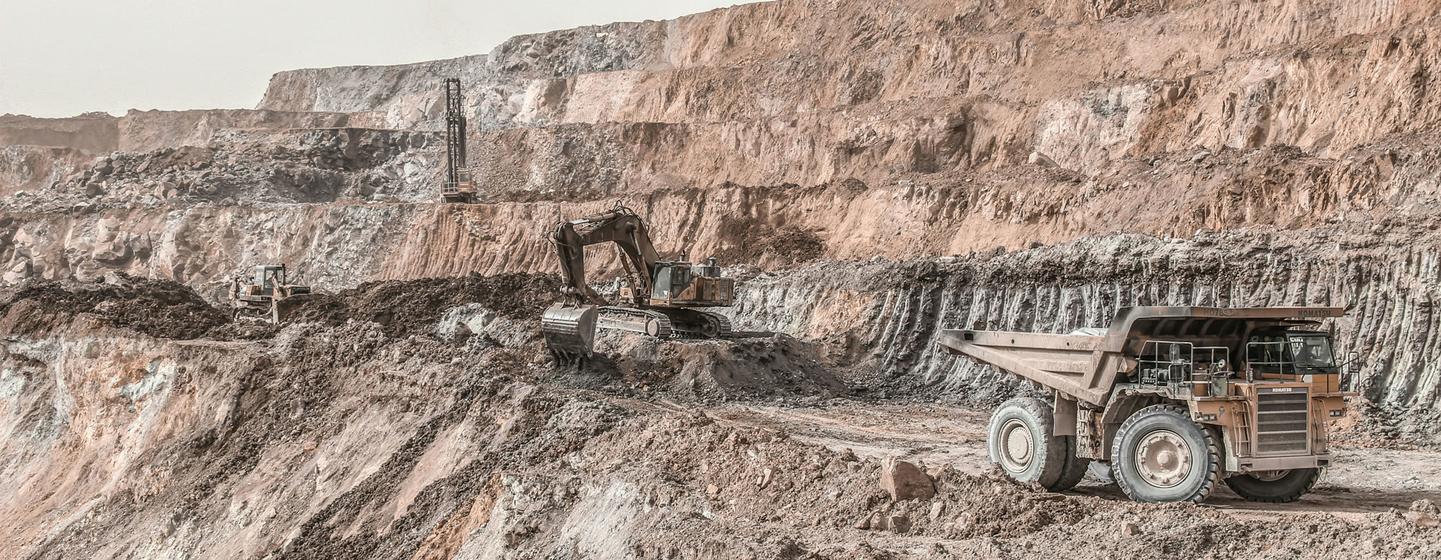5 things you should know about ‘clean energy’ minerals and the dirty process of mining them
If the world is to move away from fossil fuels, we will need to extract far more rare minerals, to power renewable energy sources such as wind turbines and solar plants. However, energy experts point out that mining these minerals can be a dirty process, ravaging the environment, and leading to human rights abuses.
We all know that we’re in the middle of a climate crisis: temperatures are rising, the weather is becoming more extreme, and this is having a negative effect on the economy, the environment, and society in general.
Although many will argue that we’re not moving fast enough to deal with the climate emergency, the energy sector is starting to turn away from energy sources that rely on big, dirty power stations, sending plumes of greenhouse gases into the atmosphere, and turn to cleaner sources such as solar and wind.
However, to power a low-emission world, we will need to mine a lot more minerals, and this is often a dirty process. Here is what to know about “energy transition minerals” and how we can limit the damage caused by getting them out of the ground.
1 Energy transition minerals: what they are, and where are they found.
Transition minerals are naturally occurring substances that are ideal for use in renewable technology. Lithium, nickel and cobalt are core components of batteries, like those that power electric vehicles. Rare earth elements are part of the magnets that turn wind turbines and electric motors. Copper and aluminium are used in massive amounts in power transmission lines.
They are found in rocks all over the world, but a handful of countries and companies control their extraction: China mines most rare earth materials, Indonesia extracts the most nickel, the Democratic Republic of the Congo produces most of the cobalt. Many energy transition minerals are also found in a group of land-locked developing countries, some of which are among the world’s least developed nations.
2 The market for energy transition minerals is growing, massively.
The shift to a clean energy system will lead to a huge increase in the need for these minerals. Between 2017 and 2022, demand for lithium tripled, demand for nickel rose by 40 per cent, and demand for cobalt jumped by 70 per cent, according to the International Energy Agency.
If the world is to fully embrace renewable energy and reach net zero greenhouse gas emissions, the use of energy transition minerals will need to increase six-fold by 2040. That would push the market value of transition minerals to over US$400 billion.

3 The economies of the mineral-rich countries could benefit…
With effective policies and safeguards, the extraction of these substances could kick off a new era of sustainable development, creating jobs and helping countries to reduce poverty. “For some countries, energy transition minerals could be absolutely transformative, under the right conditions,” says Ligia Noronha, United Nations Assistant Secretary-General and Head of the New York office of the UN Environment Programme (UNEP).
4 ...But there are several concerns.
“We cannot repeat the mistakes of the past with a systematic exploitation of developing countries reduced to the production of basic raw materials,” UN Secretary-General António Guterres recently warned. Rights groups have warned of human rights abuses throughout the industry, including at mines in developing countries. There have also been reports of forced labour at some sites.
Mining can devastate the environment if done unsustainably, leading to deforestation, water pollution and what is known as dewatering. Just to take one example, it takes two million litres of water to extract a single tonne of lithium. But some 50 per cent of global copper and lithium production are concentrated in areas with water scarcity.

5 The UN is working to ensure the sustainable mining of minerals.
A UN-wide effort is under way to ensure energy transition minerals are fairly and sustainably managed. The push was launched in 2023, with the aim of building trust, reliability and sustainability into the supply chains of these minerals.
In the Democratic Republic of Congo, the UN Environment Programme is working with the authorities to develop a national plan for the extraction of minerals, like cobalt. The plan would focus on minimizing the environmental impact of mining and explore whether local and international institutions can help resolve conflict around mineral extraction.
The sixth session of the United Nations Environment Assembly (UNEA-6) will be held from 26 February to 1 March 2024 at the UNEP headquarters in Nairobi, Kenya. Delegates are expected to advance action on the sustainable mining of minerals and metals, and other key environmental issues.

